Blog
Table of Contents
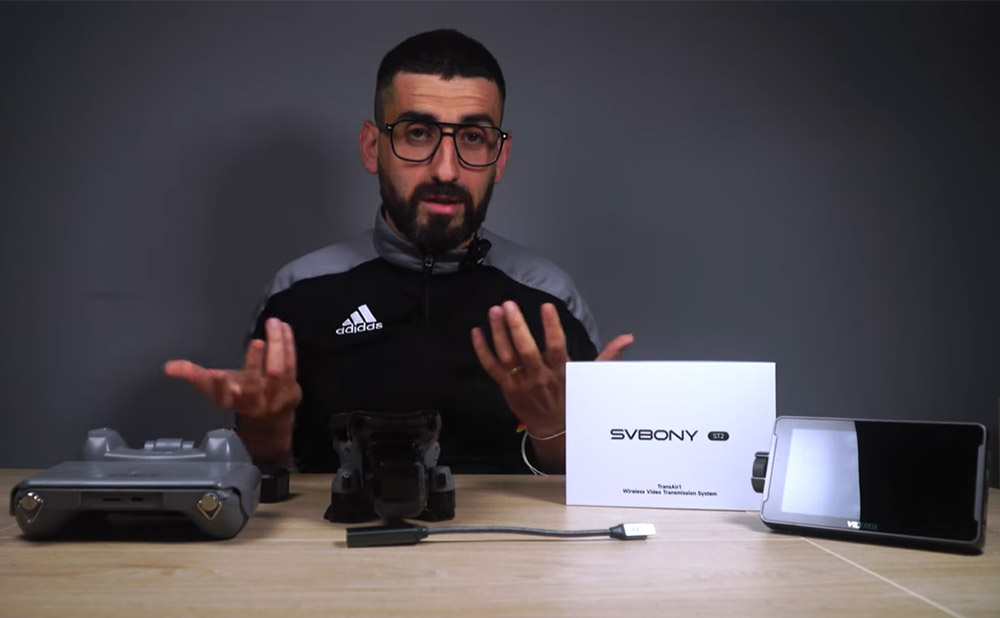
3 Steps to Enhancing Your Drone Pilot Experience with SVBONY TransAir1 Wireless
As drone pilots, we're always looking for ways to improve our flying experience and make our workflow smoother. In 2024, I came across a simple solution that allowed me to duplicate the screen of my DJI RC2 controller onto a portable monitor via an HDMI cable. This worked great, but I was left wondering: could I make this process even more efficient by going wireless, or at least reducing the amount of cables involved?
After a bit of testing, I believe I've found the solution. Let's dive into the details and explore how we can transmit the DJI RC2's display wirelessly to an external monitor, like the Viltrox, using minimal cables.
Reducing Cables Solution
In 2025, someone asked me: ''Could you make this setup wireless or at least reduce the number of cables involved?'' I decided to take on this challenge, and after some research, I found a wireless solution that worked!
Required Equipment:
- Viltrox Portable Monitor
- DJI RC2 Controller
- SVBONY TransAir1 Wireless Video Transmission Kit
TransAir1 kit includes:
- HDMI Transmitter (TX)
- HDMI Receiver (RX)
- USB Type-C cables for power
- Powerbanks (any basic ones that support 5V output)
How TransAir1 Works:
-
Step1: Connecting the Transmitter
- Attach the HDMI Transmitter (TX) to the DJI RC2 controller using the HDMI cable.
- Power the transmitter using a power bank or any USB power source. The transmitter has a USB Type-C port for power.
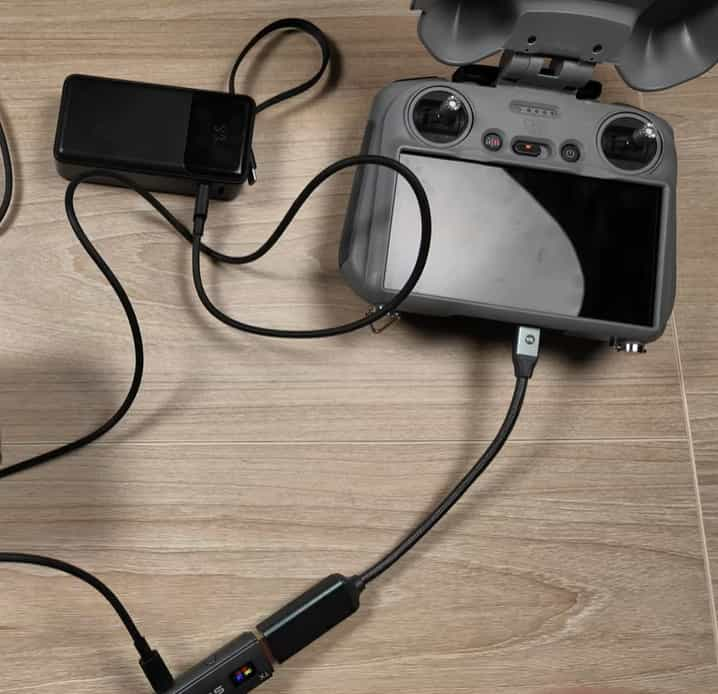
-
Step2: Connecting the Receiver
- Attach the HDMI Receiver (RX) to the Viltrox monitor using the HDMI input.
- Power the receiver using another power bank via its USB Type-C port.
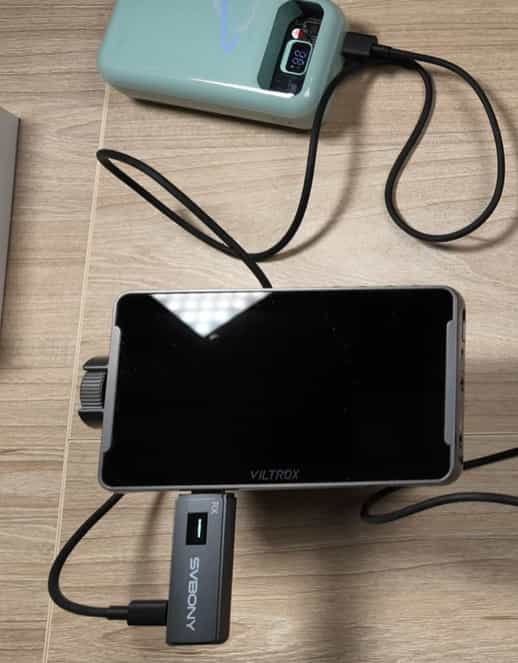
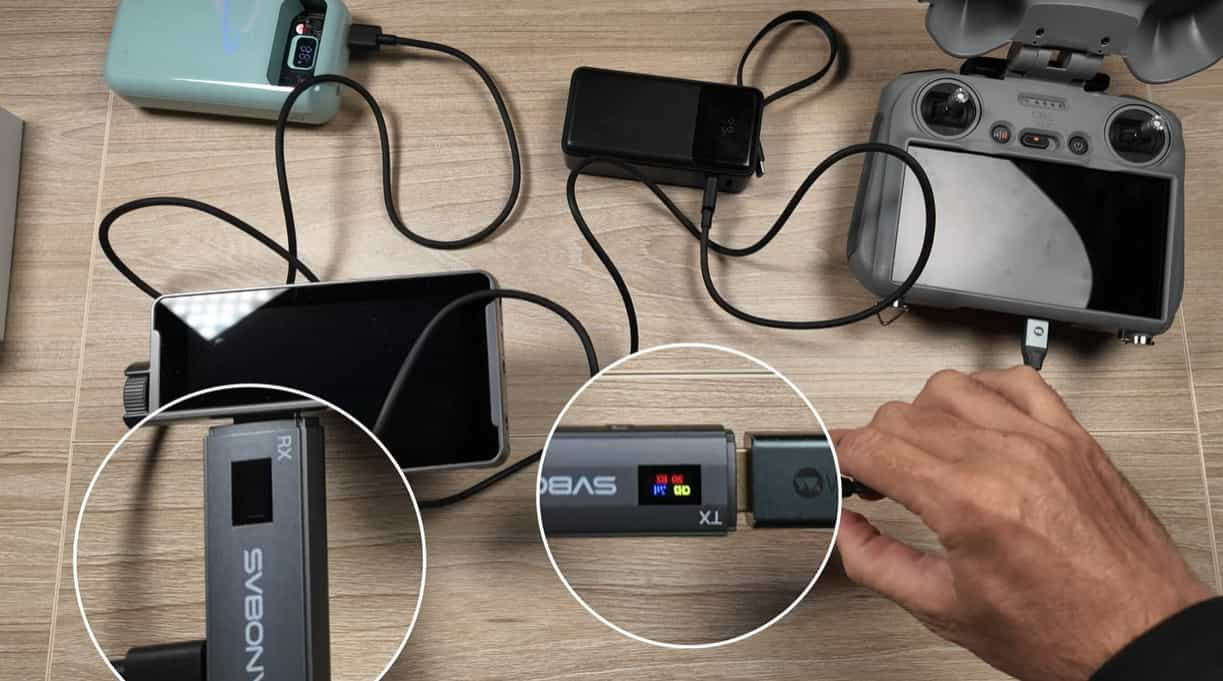
- Alternatively, the Viltrox screen can directly power the Receiver.
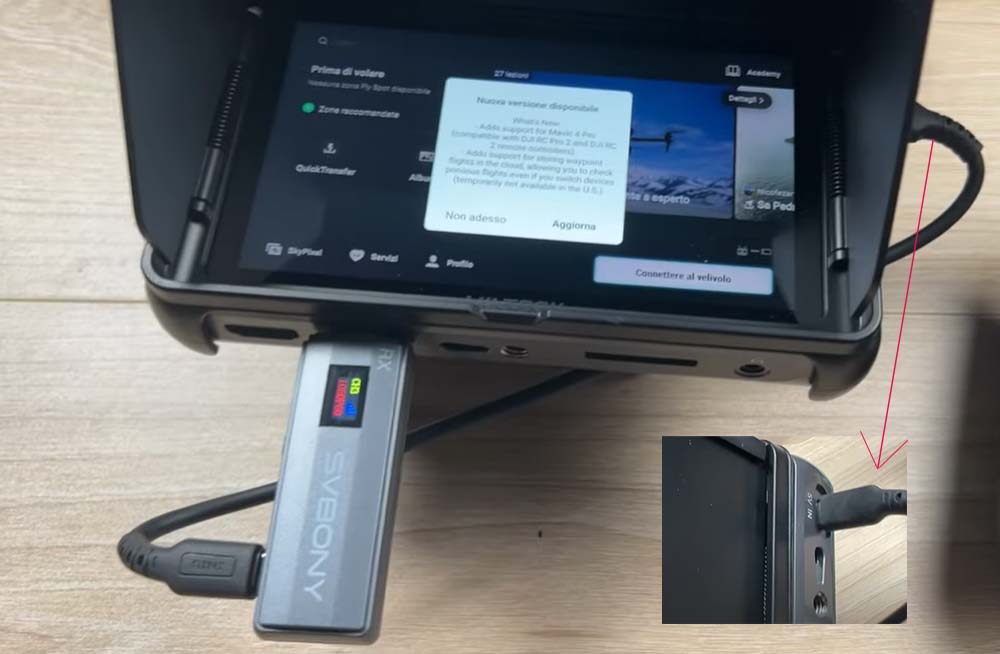
-
Step3: Wireless Transmission
Once powered, the SVBONY TransAir1 transmitter and receiver connect wirelessly, sending the DJI RC2 screen's video feed to the Viltrox monitor. You'll now see the same display from your controller on the external screen in real-time without any cables connecting the two. 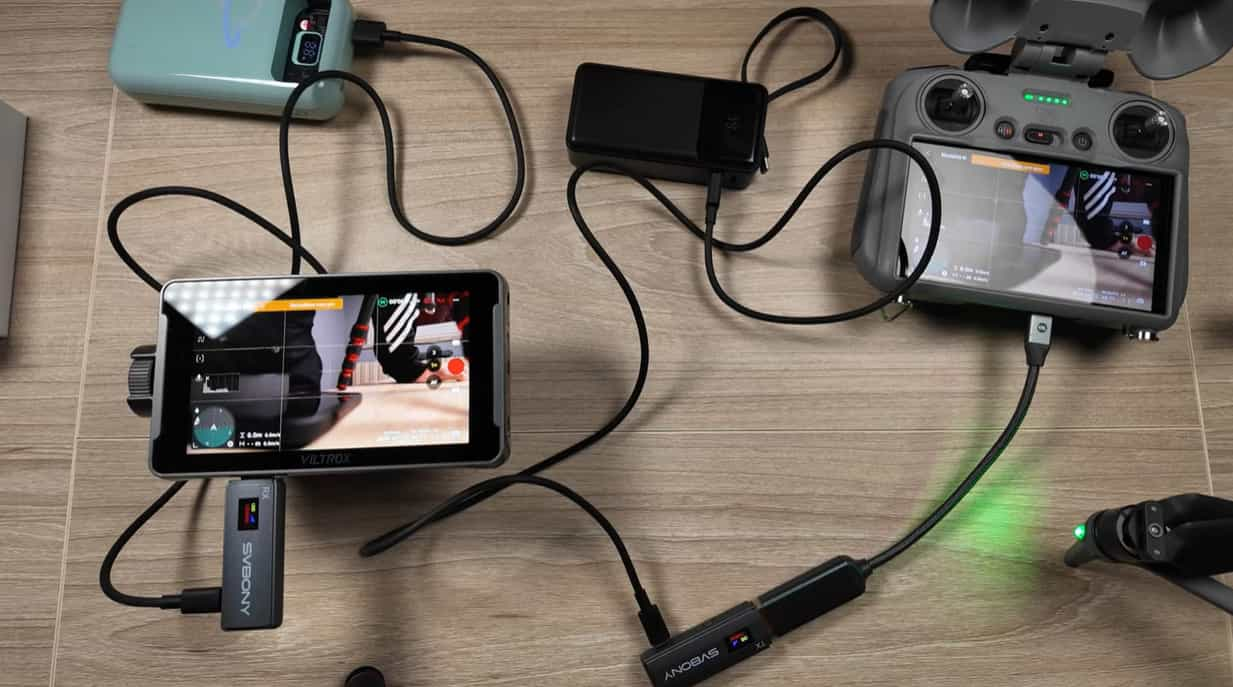
Practical Considerations
Range:
- The wireless connection works perfectly in open areas, and you can move up to 60 meters away from the drone without losing signal. However, as with all wireless systems, obstacles like walls or other interferences can cause some latency or loss of video feed. This is particularly noticeable in indoor spaces or areas with lots of interference. In an open environment, however, the connection remains stable, with no noticeable lag or frame drops.
Power Management:
-
The only "cable" in this setup is the USB Type-C cables used to power the transmitter and receiver units. These are small, lightweight, and can be tucked into your pocket, making them far less cumbersome than a full HDMI cable.
The beauty of this solution is that both the transmitter and the receiver are powered by portable power banks, so they're very easy to carry around. The power banks fit easily into your pocket or bag, giving you a much more streamlined setup for on-the-go use.
Performance and Limitations
Outdoor Testing:
-
I tested the wireless setup outside, and it worked flawlessly up to about 60 meters (200 feet) away from the drone. The signal was strong, and the video feed on the Viltrox screen was clear with zero latency. This setup was ideal for flying with a spotter, as they could watch the live footage without the need to stand next to me or be tethered by cables.
Indoor Limitations:
-
Indoors, things get a bit trickier. The wireless signal is obstructed by walls and ceilings, which can lead to occasional video dropouts and latency. The best performance is achieved in open, unobstructed spaces.
The Final Verdict
While the wireless solution is not entirely free of cables, it significantly reduces the clutter and allows for a more flexible setup. Instead of being restricted by long HDMI cables, both the pilot and the spectator can move around freely, and the power banks are small enough to be easily carried.
Would I recommend this solution? Absolutely, for outdoor use, it's a game-changer. The ease of setup, combined with the mobility, makes it a great tool for drone pilots who want to share their video feed without the hassle of running cables.
Where to Buy
You can purchase the SVBONY TransAir1 Wireless Transmitter and Receiver through the official SVBONY website. It's a great addition to your drone setup if you're looking to improve your workflow and make it more wireless.
If you have any questions or want to share your experiences with this setup, drop a comment below!


There are no customer reviews yet . Leave a Reply !